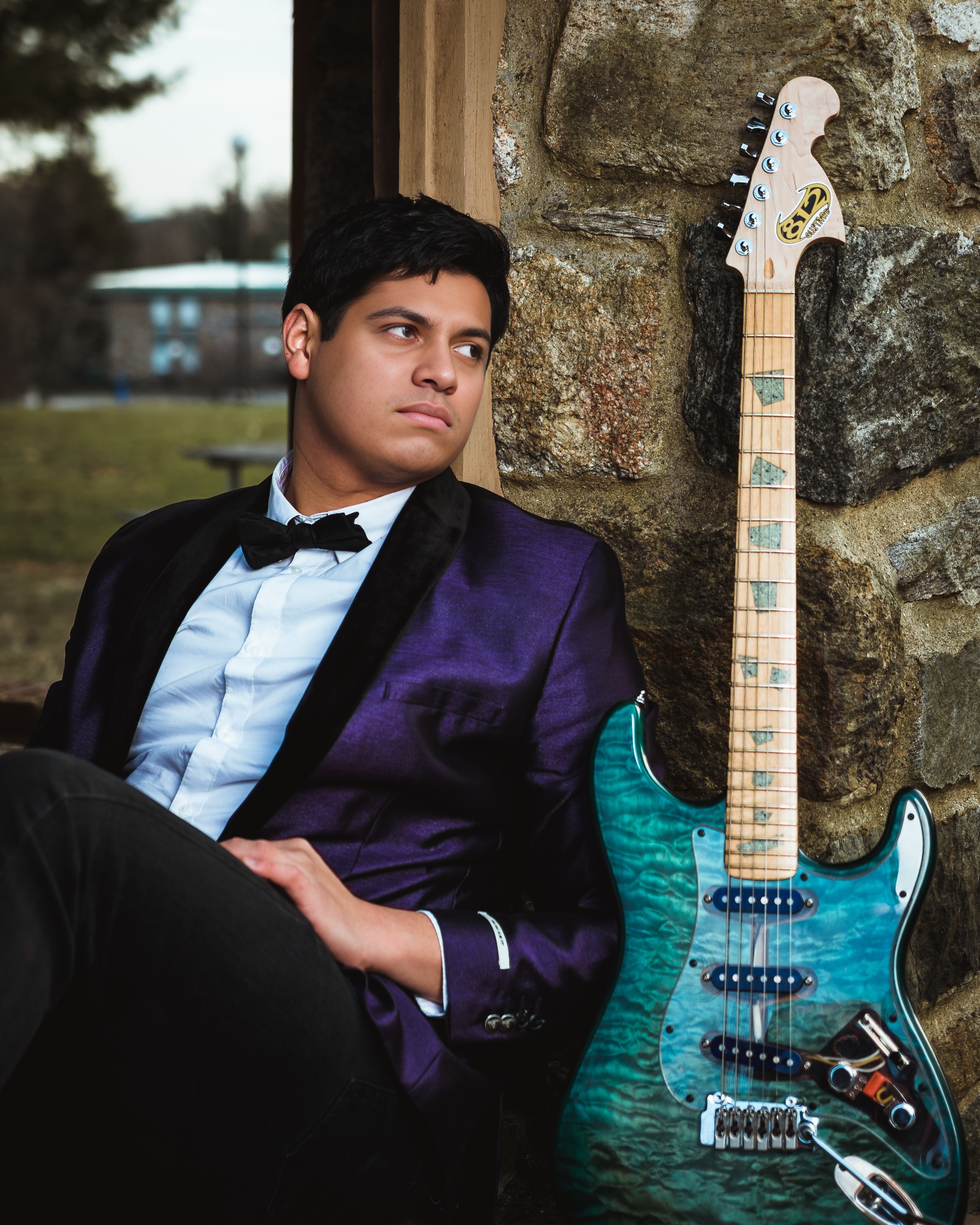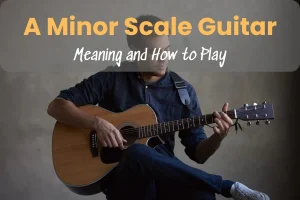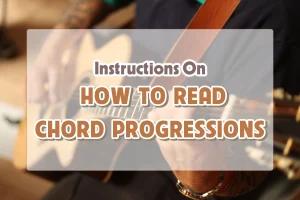Oh, how long does it take to master electric guitar? Well, let me tell you something, it’s quite the journey, and there’s no right or wrong answer. It doesn’t just happen overnight. Some folks say you need to practice for 10,000 hours to be really good at something. Remember, all the guitar heroes like Jimi Hendrix or B.B. King started with learning their first chord and played a lot until they became legends.
In my days, we didn’t have the internet, YouTube tutorials, or fancy apps to speed up our learning. It was all about the feel of the strings; the sound echoing off the garage walls, and the endless hours lost in the pursuit of that perfect riff. What’s really important is not just how fast you learn everything but enjoying the ride. Eguitarmania will discover not just the “how long” but the “how” of mastering the electric guitar.
How Long Does It Really Take to Learn Electric Guitar? (On average)
Learning to play the electric guitar is like going on a big adventure. You start off with everything being new and a bit tricky. This is when you learn the basics, like chords and playing simple tunes.

Estimate Time (Hours/Months) That Each Level Needs
For beginners, you’re looking at around 150-200 hours of practice. That might sound like a lot, but if you spread it out, it’s doable over several months. This is when you learn the basic building blocks of guitar playing.
Moving to the intermediate level, you’ll need about 500-700 hours of practice. This stage might take a couple of years, but it’s where you start really feeling like you can play the guitar well. Those who’ve moved beyond the basics and are exploring more complex techniques like bending, vibrato, and basic lead guitar.
To reach an advanced level, expect to put in over 1,500 hours. This is when you can play almost anything and really start adding your own style to the music. It’s normal to spend 1,500 hours or more because advanced techniques, delicate musical expression, and developing your own style are what matter most.
The Importance of a Strong Foundation : Starting Strong
A good start is key. This means not just playing a lot, but playing smart. Not only do you need to remember chords and scales for this base, but you also need to understand music theory, train your ears, and develop a sense of rhythm and timing. Let’s break down the key components:
- Anatomy of the Guitar: Knowing the parts of your electric guitar, such as the body, neck, fretboard, and pickups. Understanding how they influence the sound, helps you maintain your instrument and tweak its settings to get the sound you want.
- Tuning: Playing on an out-of-tune guitar can hinder your ear development and make everything you play sound off.
- Chords: Chords are the foundation of most songs. Learning major, minor, and power chords is a great starting point for beginners.
- Fretting: In this method, you use your fingers to press down on the strings on the fingerboard to make notes. Not using buzzes and making clear notes is easier when you play the strings correctly.
- Timing and Rhythm: Developing your ear allows you to learn songs just by listening to them, and the ability to keep a steady rhythm is essential for playing music that sounds good.
This kind of base not only speeds up learning, but it also makes music more enjoyable by letting you express yourself creatively and improvise. It’s like building a house; start with a strong foundation, and you’ll have something that lasts and stands tall.
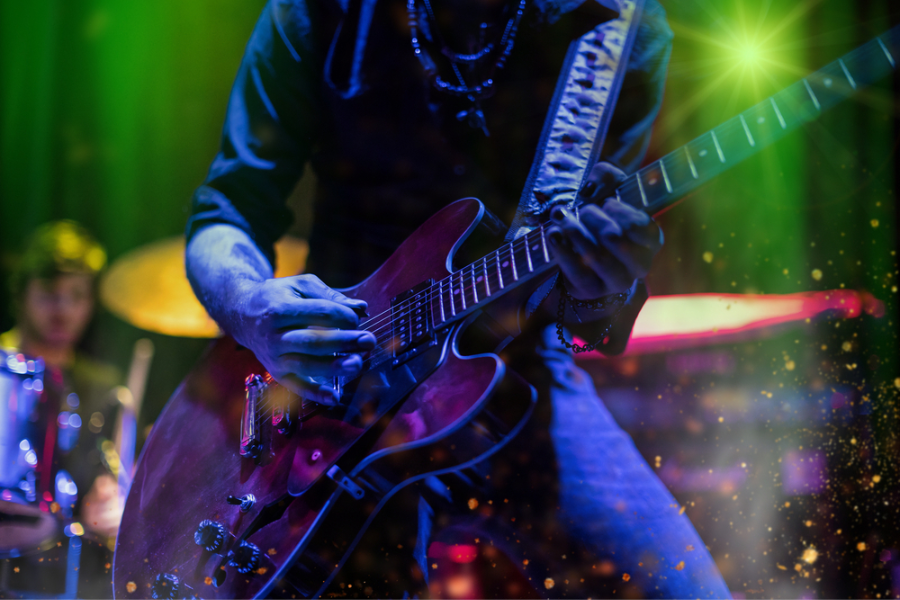
How Long Does It Take To Master Electric Guitar?
Can I really do this? How long will it take before I’m that good? . It’s a burning question that lights up the minds of many who dream of rocking out to their favorite tunes.
10,000 Hour Rule
The 10,000 Hour Rule, popularized by Malcolm Gladwell in “Outliers,” states that mastery in a profession takes 10,000 hours of effort. It’s about consistent, focused practice, a willingness to push through challenges, and a love for the instrument and its music. Here’s how the 10,000 Hour Rule can help players learn to play the electric guitar better:
At the heart of the 10,000 Hour Rule is setting long-term goals. This perspective helped me stay grounded and patient, especially during challenging phases of learning.
It also means that we should focus on improving specific aspects of your playing, and constantly pushing beyond your comfort zone. Whether it was mastering complex solos or refining my fingerpicking, each session had a clear objective.
Quality over quantity took on new meaning for me. I learned that mindless repetition was less effective than mindful, focused practice. The 10,000 Hour Rule reminded me that there’s no one-size-fits-all path to mastery.
This distinction encourages players to approach practice sessions with intentionality, making the most of each hour spent with the guitar.
Beginner’s Stage of Learning The Electric Guitar
The beginner stage is all about getting familiar with the instrument. Key lessons include:
- Getting to Know the Guitar: Learning the details of the guitar, how to hold it properly, and how to care for it.
- Essential Techniques: This includes fretting, picking, strumming, and basic finger exercises to improve dexterity.
- Simple Chords and Scales: Beginners should start with major and minor chords, as well as the pentatonic scale.
- Playing Simple Songs: Applying chords and strumming patterns to play straightforward songs.
When I first picked up the electric guitar, everything was new and thrilling, from the feel of the strings under my fingers to the sounds I could create.
Learning the different parts of the guitar and how they work together was my first step. Then, I spent countless hours ensuring my fingers learned where to go and how to move efficiently.
Understanding basic rhythms and learning to keep time were foundational. Starting with open chords and the minor pentatonic scale opened up a world of songs and riffs for me. Playing along with tracks helped me develop a sense of timing that became second nature.
Intermediate Stage of Learning the Electric Guitar
As you move into the intermediate stage, the focus shifts to refining techniques and exploring more complex music. Lessons include:
- Advanced Chords and Scales: Learning barre chords, seventh chords, and major/minor scales.
- Technique Improvement: Developing better picking techniques, bends, slides, and vibrato.
- Music Theory: A deeper dive into how music works, including chord progressions and key signatures.
- Learning Complete Songs: Playing songs from start to finish, including solos and more intricate rhythms.
At this stage, my foundational skills were solid, and I was ready to build on them. Learning different chords and experimenting with techniques like bending and slide playing added depth to my playing.
I learn more about music theory, understanding scales in context, and how chords and scales fit together. This allowed me to create my music and improve my performance. The intermediate stage was a period of exploration and personal growth, where I started to see the path from playing songs to making music.
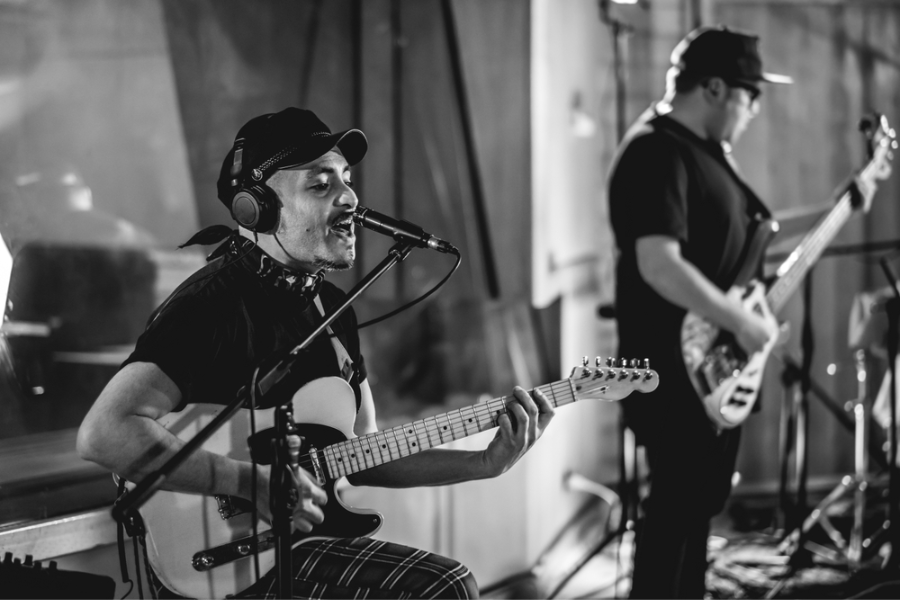
Advanced Stage of Learning the Electric Guitar
Reaching the advanced stage means you’re ready to push boundaries and define your unique style. Key aspects include:
- Mastery of Techniques: perfecting advanced techniques such as tapping, sweep picking, and complex bending.
- Musical Expression: Focusing on dynamics, tone, and personal expression through the guitar.
- Playing by Ear: Enhancing the ability to learn songs and solos by ear, without relying on tablature or sheet music.
Mastery is an ongoing process, with many spending several additional years or even a lifetime in this stage, continually learning and growing. The focus shifted from learning to play the guitar to using the guitar as a tool for artistic expression. I learned more complicated finger styles, swept picking, tapping, and other advanced skills.
It was about connecting with the guitar in a way that allowed me to translate my thoughts and emotions into music. It’s where technique, knowledge, and emotion converge to create something truly personal and expressive.
What Factors Can Affect How A Player Learns To Play Electric Guitar?
Many factors influence this process, impacting not just the speed of learning but also the depth of understanding and skill a player can achieve.
Natural Aptitude
Being naturally good at playing an instrument is a big part of learning any instrument, even the electric guitar. It may take some people longer to understand music theory, hear sounds better, or get their hands to work together with accuracy than others.
However, my mom always said, “Diligence in place of intelligence.” Persistent practice is what truly defines long-term success and mastery.
Instruction
There are two main learning methods for electric guitar: traditional face-to-face lessons and online lessons and tutorials. Finding a way to teach that works with the way the student learns is important for making sure that the knowledge is understood and used correctly.
Practice Frequency
The common recommendation of practicing for at least 30 minutes a day can serve as a guideline, but more important is the quality and intentionality behind each session. Consistency and frequency of practice are perhaps the most critical factors in learning the electric guitar.
Learn from others and online resources
Today’s digital world makes it very helpful for players of all types to learn from each other and use online tools. Watching and listening to other players can also give you ideas and help you learn new styles or methods. Websites that teach music, online groups, and YouTube have a lot of lessons, videos, and community tips that can be used along with more standard ways of learning.
Record yourself and experiments
Learning to play the guitar in a certain way requires practice and experimentation with various approaches, genres, and even guitar configurations. When you play back records, you can hear things that need work, like problems with time, pitch, or tone. As a result, it gives an objective view that is hard to understand in real time.
Tips for Learning to Play Electric Guitar Faster
Here are some unique and effective tips to help you play the electric guitar faster and more efficiently:
Break Down Your Practice
Break up your practice time into specific parts, like technique, theory, ear training, and music. This keeps things fair and keeps people from getting too tired of working in any one area. You can get better at playing faster if you spend time every day working on different parts of it.
Focus on Technique Early On
Spending time early on to learn the right way to do something can save you time later on when you need to fix bad habits. Pay close attention to where you put your hands, how you pick, and where your fingers are placed. Using the right method will help you play better and keep you from getting hurt.
Focus on Ear Training
Try to recognize tunes, chords, and riffs by ear to improve your hearing. Start with easy songs and get better as you go. Training your ears will help you learn new songs and play faster.

The Famous Lifetime Learning Case
These are just a few examples, and there are countless other guitarists who embody the spirit of lifelong learning:
Chuck Berry (Rock and Roll)
Began Playing: In his teens, he was influenced by blues and country music. Even in his 90s, Chuck Berry continued to perform live and write new music, demonstrating his lifelong dedication to his craft.
Pioneering rock and roll with his energetic playing style, distinctive guitar riffs, and showmanship. Songs like “Johnny B. Goode,” “Maybellene,” and “Roll Over Beethoven” are rock and roll classics.
Achievements: Influenced countless guitarists, including legends like Keith Richards and John Lennon. Credited with shaping the sound of early rock and roll. His music entered the Rock and Roll Hall of Fame in 1986.
Al Di Meola (Jazz Fusion)
Began Playing: Around age 15. He continues to push the boundaries of his instrument and explore new musical territory, even in his 70s.
His incredible speed, technical proficiency, and ability to blend genres like jazz, rock, and world music. He’s considered a pioneer of jazz fusion guitar.
Achievements: Numerous Grammy nominations; collaborations with renowned artists like Chick Corea and Paco De Lucia; establishing himself as a virtuoso player and innovator in the jazz fusion scene.
What Is The Easiest Song To Learn On Guitar?
There isn’t a single “easiest” song on the electric guitar that works for everyone, but here are a few popular choices for beginner guitarists:
“Hallelujah” by Leonard Cohen: Another 4-chord song (C, G, Am, F) with a beautiful melody that’s easily playable on acoustic guitar.
“Let It Be” by The Beatles: A timeless song with only 3 chords (C, G, and Am) and a slow tempo.
“Brown Eyed Girl” by Van Morrison (G, D, Em) – upbeat and fun, perfect for a singalong.
“Take Me Home, Country Roads” by John Denver (G, D, Em, C) – A beautiful and iconic song with a steady strumming pattern.
“Blowin’ in the Wind” by Bob Dylan (G, D, Em, C) – A thought-provoking song with a simple structure.
Remember, these are just springboards. There are countless other great options out there!
Final Thoughts
Some people may need to practice the electric guitar for a few years before they feel strong and able to express themselves on it. Others may spend decades getting better at their instrument and discovering the depths of artistic expression, but they will still find new things to do with it.
What truly matters in this journey is not the destination of “mastery” but the path taken to get there. So, take up the guitar, enjoy every string, and allow your passion for music to lead the way to becoming an expert player.

